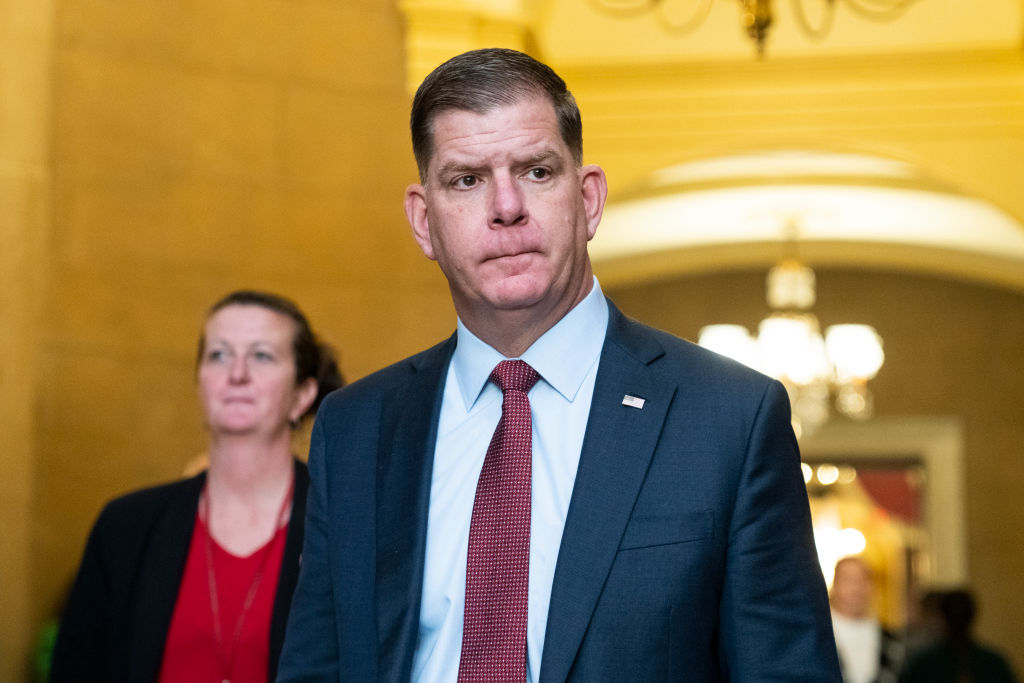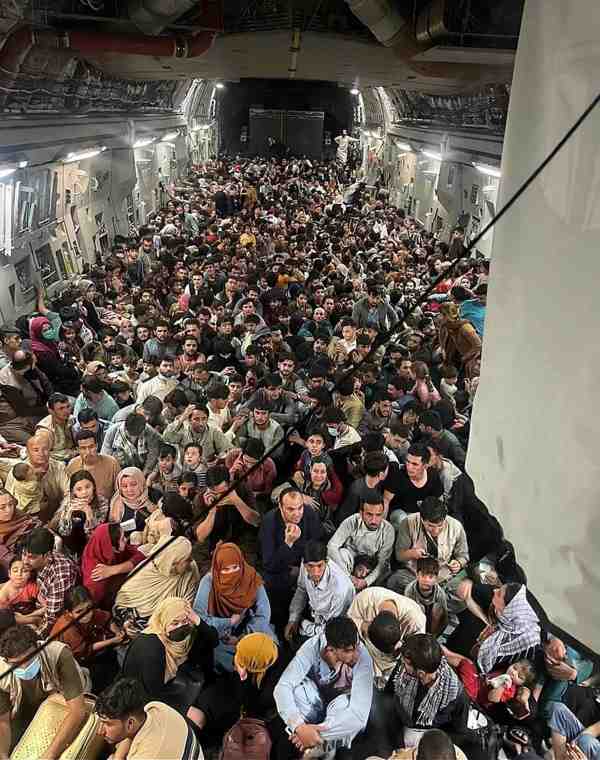It’s hard for many to believe, but companies across the U.S. are employing migrant children as young as 12 to sanitize slaughterhouse floors, construct roofs, and package food products. And even in the wealthiest country in the world, putting an end to the practice is a long way off.
The Labor Department recently reported a 69 percent increase in companies illegally employing children since 2018. Last year, the department found 835 companies employing nearly 4,000 children unlawfully. And more than 600 child labor investigations are currently underway.
“This is not a 19th century problem—this is a today problem,” Labor Secretary Marty Walsh said in a statement. “This is a problem that will take all of us to stop.”
The reports have sparked federal and state investigations, and a promised crackdown from the Biden administration. But with divided government and only a nebulous sense of the problem’s size, the exploitation of children for labor will be difficult to eradicate.
How many children work illegally in the U.S.?
The Labor Department numbers, based on confirmed cases, likely don’t show the full extent of the problem. There are many challenges with trying to fill in the gaps.
The Census Bureau’s American Community Survey asks about employment status of Americans—but only for those 16 and older. That means researchers trying to fully understand child labor have to piece together estimates with other surveys and reports. Anecdotal evidence, such as teachers who observe children leaving school for work, also helps. Yet the data are still incomplete.
Making the problem worse, child laborers’ paychecks may be paid in cash or go to their parents’ paycheck, according to Julie Taylor of the National Farm Worker Ministry, a faith-based advocacy group.
It’s even difficult to nail down the number of children who work legally across the United States, primarily in the agricultural sector where the laws are generally more lax. (The Fair Labor Standards Act of 1938 placed safeguards around children working, but allows children to work on farms starting at age 12, provided they have parental permission and don’t miss school.)
“We don’t have very good estimates of the number of independent child migrants that are working in the United States,” Eric Edmonds, an economics professor at Dartmouth College, said. “My guess is that the number of independent child migrants that are working are a fraction of a percent of the number of children working in the United States.”
An estimated 2.5 million children aged 15 to 17 work during the summer months in non-agricultural industries, the Government Accountability Office in 2018 said. The agency estimated in 1998 that there were around 300,000 children aged 15 to 17 working in agriculture in the United States. A quarter-century later, researchers continue to cite that estimate, which includes migrant workers as well as local children working on farms not owned by their parents. (Other groups place the number closer to 500,000.)
Immigrants are particularly vulnerable.
The Labor Department does not track how many of the cases involve immigrants, but new arrivals to America may be disproportionately affected.
“I see it as primarily a story of immigrants who are being exploited,” said Reid Maki, director of child labor advocacy for the National Consumers League and coordinator of the Child Labor Coalition. While some native-born children work on farms, “those numbers are very small. And “if they’re working on their parents farm, it's not considered child labor.”
The number of unaccompanied children entering the United States rose to 128,904 in 2022, according to Department of Health and Human Services data. U.S. law mandates that border officials transfer unaccompanied minors to the HHS, where the agency’s Office of Refugee Resettlement (ORR) oversees children’s care and shelter until they are placed with sponsors.
Yet caseworkers told the New York Times they felt pressure to move children as quickly as possible to sponsors. Caseworkers check in with the children a month after they’re out of federal custody and with either a sponsor, oftentimes a relative or foster family, but there are some who fall through the cracks: The agency lost contact with more than 85,000 children over the last two years, according to the Times.
Julie Taylor said that oftentimes, she sees people take their children to work on farms out of desperation. When crackdowns happen, she said, “they get laid off, they get fired. People sort of tighten up in those places and then they don’t even have the poor options they had before.”
Can the Biden administration do anything to help?
The White House announced last month that it is creating a new interagency task force to crack down on companies using child labor. The taskforce will be led by the Labor and Health and Human Services Departments, and it will examine factories and suppliers, as well as staffing agencies businesses rely on to find laborers.
It also said it will work to improve following up and keeping track of children who have sought asylum. The administration also vows to work on education efforts and maintaining a hotline to track violations, but it’s unclear whether this can override the economic relationships that drive child labor.
Looking to add more teeth to enforcement, the Labor Department has called for stiffer penalties on companies that employ children. Currently the maximum penalty for a child labor law violation for offending companies is a $15,138 fine per child. Taylor described those penalties as simply “a cost of doing business,” for many major companies.
At the same time, several states facing worker shortages are considering making child labor laws more lax. In Minnesota, Republican lawmakers have introduced a bill to allow 16- and 17-year olds work on construction sites. Iowa is also considering a revamp of its laws, and would remove a prohibition on 14- and 15-year-olds working in freezers and meat coolers, and extending the time frame kids are allowed to work from 7 p.m. to 9 p.m., as well as 11 p.m. for parts of the summer.






Please note that we at The Dispatch hold ourselves, our work, and our commenters to a higher standard than other places on the internet. We welcome comments that foster genuine debate or discussion—including comments critical of us or our work—but responses that include ad hominem attacks on fellow Dispatch members or are intended to stoke fear and anger may be moderated.
With your membership, you only have the ability to comment on The Morning Dispatch articles. Consider upgrading to join the conversation everywhere.